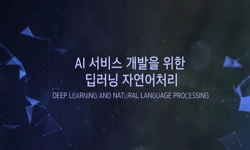Clustering Unlabeled Spatial-datasets to convert them to Labeled Spatial-datasets is a challenging task specially for geographical information systems. In this research study we investigated the NYC Taxi Limousine Commission dataset and discover that ...
http://chineseinput.net/에서 pinyin(병음)방식으로 중국어를 변환할 수 있습니다.
변환된 중국어를 복사하여 사용하시면 됩니다.
- 中文 을 입력하시려면 zhongwen을 입력하시고 space를누르시면됩니다.
- 北京 을 입력하시려면 beijing을 입력하시고 space를 누르시면 됩니다.
https://www.riss.kr/link?id=A107815169
- 저자
- 발행기관
- 학술지명
- 권호사항
-
발행연도
2021
-
작성언어
English
- 주제어
-
자료형태
학술저널
-
수록면
207-212(6쪽)
- DOI식별코드
- 제공처
-
0
상세조회 -
0
다운로드
부가정보
다국어 초록 (Multilingual Abstract)
Clustering Unlabeled Spatial-datasets to convert them to Labeled Spatial-datasets is a challenging task specially for geographical information systems. In this research study we investigated the NYC Taxi Limousine Commission dataset and discover that all of the spatial-temporal trajectory are unlabeled Spatial-datasets, which is in this case it is not suitable for any data mining tasks, such as classification and regression. Therefore, it is necessary to convert unlabeled Spatial-datasets into labeled Spatial-datasets. In this research study we are going to use the Clustering Technique to do this task for all the Trajectory datasets. A key difficulty for applying machine learning classification algorithms for many applications is that they require a lot of labeled datasets. Labeling a Big-data in many cases is a costly process. In this paper, we show the effectiveness of utilizing a Clustering Technique for labeling spatial data that leads to a high-accuracy classifier.
동일학술지(권/호) 다른 논문
-
Detection Mechanism on Vehicular Adhoc Networks (VANETs) A Comprehensive Survey
- International Journal of Computer ScienceNetwork Security
- Shobana, Gopalakrishnan
- 2021
-
Application of Information Technologies for Lifelong Learning
- International Journal of Computer ScienceNetwork Security
- Poplavskyi, Mykhailo
- 2021
-
Breast Cancer Classification Using Convolutional Neural Network
- International Journal of Computer ScienceNetwork Security
- Alshanbari, Eman
- 2021
-
Towards a Deep Analysis of High School Students' Outcomes
- International Journal of Computer ScienceNetwork Security
- Barila, Adina
- 2021




 ScienceON
ScienceON






